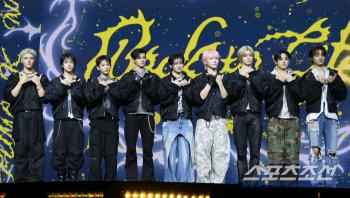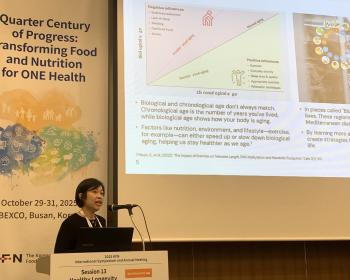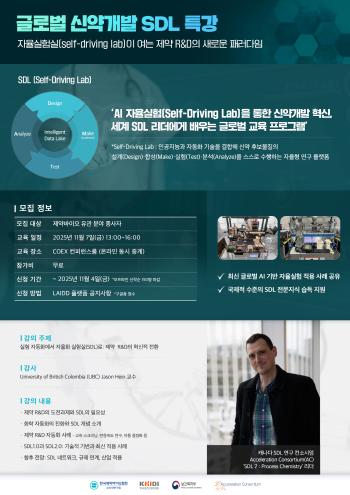Kia, Popularized EV and PBV Pickup Growth Drivers..4.19 million units sold in 2030 to achieve 4.5% global
Apr 09, 2025
|
In 2020, Kia unveiled a mid- to long-term future strategy with the core content of the preemptive transition to the electric vehicle business system and the provision of customized mobility solutions.
Every year through CEO Investor Day, Kia introduces changes and achievements to investors and analysts, while sharing and actively communicating its more sophisticated future vision.
The announcement focused on sharing the 2030 mid- to long-term growth strategy, which has been strengthened in response to recent changes in the global auto industry landscape, based on achievements made over the past five years amid growing internal and external uncertainties.
"Since declaring 'Kia Transformation' in 2021, Kia has been constantly striving to become a brand that innovates space and makes time worthwhile beyond simple means of transportation," said Song Ho-sung, president of Kia. "We will continue to develop the brand by implementing mid- to long-term strategies to strengthen the interior and effectively respond to changes in the automobile market."
Kia will more realistically materialize its mid- to long-term growth strategy and accelerate its efforts to target the global market according to the market conditions of each country.
Kia set a global market sales target of 3.22 million units this year and set a target of ▲ 3.75 million units in 2027 ▲ 4.19 million units in 2030 and 4.5% market share. In line with the realization of China's sales target, 2030 has newly set a target of 110,000 units adjusted from 4.3 million units announced on Investor Day last year.
By region, it plans to sell 1.11 million units in North America and 770,000 units in Europe in 2030. It aims to sell 580,000 units in Korea and 400,000 units in India.
The sales of eco-friendly cars are planned to increase from 897,000 units (28% of sales) in 2025 to 2,333,000 units (56% of sales) in 2030. Of these, it plans to sell 1,259,000 electric vehicles and 1,074,000 hybrid and plug-in hybrids.
In particular, it plans to actively expand the sales share of eco-friendly cars by major four markets to 70% in North America, 86% in Europe, 73% in Korea, and 43% in India in 2030.
We will also strengthen our lineup to expand sales of eco-friendly cars. As of the end of this year, the proportion of electricity will be increased from a total of 32 types, including 23 internal combustion engines and 9 electric vehicles, including hybrids, to 17 internal combustion engines and 15 electric vehicles by 2030.
In the case of internal combustion institutions, the strategy is to continue to operate to respond to emerging markets, while hybrid models expand from Seltos to Telluride to absorb various demands.
In addition, Kia uses popularized EV models from EV3, EV4, and EV5 to EV2, which is scheduled to be released in 2026, to overcome the catharsis and solidify its position as a leading brand in the era of EV popularization.
In addition, starting with PV5, which will be released in the second half of this year, we plan to continue to expand our PBV lineup and continue to strengthen our competitiveness in new vehicle levels.
Kia has established a strategy to secure a production capacity of 200,000 units through the establishment of a plant dedicated to Hwaseong EVO Plant PBV and to actively respond to market-specific demand fluctuations by maximizing the production capacity of overseas plants.
Hybrid will sell a total of 492,000 units of 6 models this year, including K5, K8, Niro, Sportage, Sorento, and Carnival, and complete 10 lineups and increase to 993,000 units by expanding to a portfolio across all segments by 2030.
Kia plans to supply more than 900,000 units in 2030 through increased powertrain production facilities to expand hybrid sales. It plans to flexibly respond to market demand by increasing small, medium, and large vehicles in Korea and small and medium-sized hybrids in overseas markets.
New model growth strategy - EV, PBV, pickup
① EV strategy
Kia plans to solidify its position as a leading global electrification brand based on confidence in Kia brand electric vehicles despite difficult external business environments such as continuing casm and increasing geopolitical risks.
Electric vehicle sales started with ▲324,000 units this year, ▲783,000 units in 2027 and ▲1,259,000 units in 2030 and adjusted the target set last year. ※2024 Investor Day: 1.147 million units in 2027 and 1.6 million units in 2030)
Kia plans to continue to pursue mid- to long-term strategies that aim to convert electricity in order to successfully settle into the era of popularizing electric vehicles.
To this end, Kia plans to expand EV popularization models such as EV3, EV4, and EV5 globally to lower EV purchase hurdles and build a full lineup through the successful launch of EV2 in 2026.
In addition, while developing next-generation batteries with cost competitiveness and marketability, it secures price competitiveness by optimizing hardware, applying next-generation electronic architectures, and upgrading vehicle software.
Enhance customer service as well. Expand the electric vehicle-specific maintenance network and strengthen professional manpower capabilities through the operation of EV technical training and maintenance training certification system in the maintenance shop. In addition, it plans to maximize customer convenience by providing EV remote diagnosis service that provides services remotely in case of vehicle abnormalities.
We will continue to expand our charging infrastructure. In Korea, more than 13,000 high-speed and high-speed chargers will be built by 2030 with 2,326 installed. In North America, IONA will build more than 50,000 superfast chargers by 2030 and Europe will build more than 17,000 in partnership with IONITY.
In addition, it plans to expand local production of electric vehicles in each region, including the United States, Europe, and India, including Korea, and to optimize supply by establishing a flexible production system.
▲Korea is a hub for EV development and production, ▲The U.S. plans to produce mid- to large-sized SUVs and pick-ups ▲ Europe plans to produce major regional vehicles such as small and medium-sized SUVs and hatchbacks ▲ India plans to produce local strategic small SUVs. In addition, 13 domestic and foreign factories (7 domestic and 6 overseas) produce internal combustion engines and electric vehicles in a mixture, and increase production efficiency through two electric vehicle factories.
② PBV Strategy
Kia has been building a PBV business system and ecosystem to expand its new business model over the past two years since it introduced its PBV lineup and business strategy on Investor Day in 2022.
Kia will enter the global LCV market through PBV and launch PV5 in July this year, PV7 in 2027, and PV9 in order.
We aim to sell a total of 250,000 PBVs in 2030, including 133,000 in Europe, 73,000 in Korea, and 45,000 in other regions, by expanding the business considering the trend of electrification in each global market.
PBV consists of three types: ▲ Mobility customized for passenger transport 'People Mover', ▲ Utility optimized for business environment ▲ Delivery specialized for logistics delivery. Kia is currently working with more than 100 global companies to develop solutions to meet various PBV needs.
Kia plans to provide standard, long, and high-loop models for three body types such as passengers, cargo, and chassis cap to PV5 released this year, while responding to various needs through conversion models such as high-end passengers, light campers, crewvans, open beds, built-in towers, and freezer towers.
Kia builds an efficient manufacturing ecosystem by building an EVO plant for PBV-only factories in Hwaseong, Otoland, and building a conversion center nearby. Overseas regions aim to supply local specialized vehicles through conversion partnerships with local companies.
In line with the characteristics of purpose-based mobility, we plan to provide various B2B-specific service applications based on large-screen IVI by installing Android Automotive-based OS based on the SDV concept.
Build an online website dedicated to PBV to enhance the B2B customer experience. In the case of offline, it will select and foster PBV-only dealers among existing dealers in Europe, and build a business lounge where customers can intuitively experience vehicles, solutions, and services to maximize customer experience.
Kia plans to expand its business base to B2B LCV customers as well as B2C-based passenger customers through PBV, and secure continuous growth and revenue by expanding its entry market.
③ a pickup strategy
Kia expects that the classic pickup Tasman, unveiled at the "2024 Jeddah International Motor Show" in October last year, will present a new paradigm in the domestic pickup market with its innovative design and excellent marketability.
Tasman is a pickup with a futuristic and unique design, premium SUV-level interior space and leisure convenience, and excellent off-road performance such as connected car navigation cockpit (CCNC), OTA, and all-wheel drive.
Kia aims to meet the diverse needs of its customers through its internal combustion engine and electric vehicle pickup portfolio in the pickup market, which accounts for more than 9% of global finished car industry demand, starting with Tasman.
Kia plans to launch Tasman in emerging markets, including Korea and Australia, starting in Korea this year, and secure a 6% market share (excluding North America) with an average annual sales of 80,000 units.
In North America, the largest pick-up market, it plans to launch mid-sized electric pickup based on new electric vehicle platforms and sell 90,000 units per year and achieve a 7% market share.
The best-in-class indoor and loading space, increased convenience through the development of the toy system OEM, and specialized functionalized driving on-road, while applying the best-in-class safety and infotainment platforms for safety and convenience.
Kia cites ▲ connectivity service ▲ self-driving technology ▲ performance ▲ design as four key product strategies to achieve mid- to long-term sales goals, and continues to develop product value by mobilizing its enterprise-wide capabilities.
Kia overcomes space constraints such as keeping software up-to-date regardless of location by expanding OTA (over-the-air) technology, while launching connected stores in Korea, the United States, and Europe since 23rd to provide digital features on demand (FoD) products.
In addition, it plans to advance the connected car service by expanding the connected car service (CCS) from 34 countries by the end of 24 to Africa, the Middle East, Asia-Pacific, and Latin America by the end of 26 to a total of 71 countries.
Kia is continuously developing autonomous driving and autonomous parking technologies, which are the core of future products. By upgrading its own self-driving software in the mid- to long-term, and securing data, infrastructure, and industrial standard technologies through partnerships, it will continue to develop self-driving technologies in conjunction with SDV, a next-generation product direction.
Kia plans to respond flexibly to future demand for eco-friendly vehicles by developing new powertrains. It plans to develop a new gasoline 2.5 turbo engine and develop a next-generation hybrid system with increased driving efficiency, and an EREV system that combines the advantages of EVs and internal combustion engines.
In addition, Kia plans to maximize electric vehicle performance by developing fifth-generation batteries that secure high energy density and improved low-temperature performance through optimized material combinations.
Kia is working with 42Dot, Hyundai Motor Group's global software center, to develop key SDV (software-oriented automobile) technologies for a successful SDV transition, and is also leading SDV innovation in mobility services and solutions through close cooperation with AVP headquarters, the group's leading research organization.
In particular, Kia is developing core technologies such as ▲ 'Electric and Electronic Architecture' that implements core performance of vehicles and enables continuous updates ▲ 'SDV Operating System' that provides stable and uninterrupted use environments ▲ 'Software (infotainment system) that provides intuitive and hyper-personalized services.
By integrating the three core technologies, the company plans to implement autonomous AI functions with SDV Face Car that applies electric and electronic architectures (computer systems) based on high-performance computers for vehicles in 2026, and then build an SDV mass production system and software ecosystem.
Kia is actively investing in major companies such as Mosonal, Boston Dynamics, and Supernal to create mid- to long-term applications of future technologies and new revenue models.
In the case of Moral, robotaxi pilot projects are being carried out in Las Vegas and Pittsburgh, and through cooperation with Kia, we will continue to advance autonomous driving technology.
In the case of Boston Dynamics, we are introducing stretch robots in distribution centers and promoting logistics automation using PBV and SPOT in the final delivery stage.
We are considering providing multi-modal services between ground and urban airlines in connection with PBVs in VIP protocol and emergency medical transfer services through collaboration with Superannels.
Kia also announced specific business plans and mid- to long-term financial goals for 2025.Global demand for automobiles is expected to grow 0.3% year-on-year to about 84.6 million units in 2025, while Kia aims to sell 3.21 million units (based on wholesale sales and 3.17 million retail units), up 4.1% year-on-year, and achieve a 3.7% global auto market share.
This year, the company plans to continue its global sales momentum by introducing three derivatives: ▲EV9 GT, K45DR, and EV45DR, including five new models, including ▲ Siros, Tasman, EV4, EV5, and PV5, and one new model, ▲Carens EV4.
The domestic market continues to popularize EVs by strengthening the lineup through the successful launch of EV4 and EV5 this year, and aims to sell 550,000 units (based on retail) and a market share of 34.0% through pickup and creation of new markets with the launch of Tasman and PV5.
In the U.S., the company plans to maintain sales competitiveness of its flagship models, Sorento and Telluride, continue its growth momentum through Sportage marketability improvement models, while selling 843,000 units and maintaining growth at 5.1% market share in response to local policies, institutions, and market changes.
To sell 558,000 units and achieve a market share of 3.7%, Europe will expand EV3 sales and successfully launch EV4 and EV5 to respond to strengthened emissions regulations, while launching PBV business in earnest through successful PV5 launches.
India aims to sell 300,000 vehicles and achieve a 6.9% share through new cars, including the Karen marketability improvement model and the Ciroz launched in January. In particular, it plans to strengthen its dealer network by securing new dealers and enhance service capabilities to become a customer-oriented brand.
In China, it plans to maintain sales of 80,000 units in consideration of the fierce competitive environment in the domestic market and increase overseas exports to 180,000 units, up 7% year-on-year, to improve profitability by improving factory utilization.
The financial target for 2025 was ▲112.5 trillion won in sales (up 4.7 percent from the previous year), ▲ 12.4 trillion won in operating profit (down 2.4 percent), ▲ 11.0 percent in operating profit (down 0.8 percentage points).
Kia sees three factors to achieve high profits last year: ▲ growth into a product-oriented brand; ▲ improvement of product value added; ▲ increase of vehicle value; ▲ secure structural cost advantage through mixed production system.
Key factors in achieving mid- to long-term goals include ▲ Strengthening profitability by expanding hybrid sales and cutting costs ▲ Increasing EV profitability by expanding next-generation battery strategies and EV sales and improving costs ▲ Creating new added value by shifting SDV business models.
Regarding the investment plan for the next five years until 2029, it announced that it would invest a total of 42 trillion won, an increase of 4 trillion won from the previous five-year (2024-2028) plan. Among them, investment in future projects is 19 trillion won, and in detail, it plans to invest 67 percent for electrification, 9 percent for SDV, 8 percent for AAM and Robotics, 5 percent for energy, 3 percent for mobility, and 7 percent for others.
Kia continues to implement a shareholder return policy to maximize shareholder value.It aims for a total shareholder return (TSR, dividend and share buyback and burnout) of 35% by 27 years through annual sales growth of 10% or more, achieving an operating margin of 10% or more, and efficient capital management of a return on equity (ROE) of 15% or more.
Kia has set a minimum dividend per share at 5,000 won and set a dividend payout ratio of at least 25% in order to return stable profits to shareholders through its dividend-priority policy. In addition, in order to enhance shareholder value, the company plans to actively return shareholders to meet market expectations by purchasing treasury stocks in installments in the first and second half of the year and incinerating them 100%.
Editor Kim Tae-jin, tj.kim@carguy.kr
- Mid- to long-term sales objectives
▲ 2013 3.22 million units ▲27 3.75 million units ▲ 30-year 4.19 million units (share 4.5%)
- Target for sales of eco-friendly cars
▲89.7 million units in 2025 (32.4 million EVs, 573,000 xHEVs, etc.)
▲2333 million units in 30 years (EV 125.9 million units, xHEV 1074 million units, etc.)
- Reinforcing the lineup of eco-friendly cars
▲ 23 types of ICE (6 types of HEVs) in 25, 9 types of EVs ▲ 17 types of ICE (10 types of HEVs) in 30, 15 types of EVs
By region
Growth Strategy
- U.S. 1.01 million units achieve market share of 6.1%
- 774 million units in Europe achieved a 5.0% market share
- India's 400,000 units achieve 7.4% market share
- South Korea achieves 580,000 units and 36.3% market share
EV-Mid-term to medium-term sales target
▲25 years 324,000 units ▲27 years 783,000 units ▲30 years 125.9 million units
- Establishment of a full lineup of popularized models such as EV2, EV3, EV4, EV5
- Secure price competitiveness, strengthen customer service, expand charging infrastructure
- Optimizing global supply chain
▲Korea: EV Development and Production Hub ▲US: Medium- and small-sized SUVs, pickup
▲Europe: Small and Medium SUVs, hatchback ▲ India: Local strategy small SUVs, MPVs
PBV
- With PV5 launch in July 25, PV7 launch in 27, and PV9 launch in 29
Provides integrated mobility solutions
- Target sales of 250,000 units in 30 years
▲ By region: Europe's 13.3 million units, Korea's 7.3 million units, and other regions' 45 million units
▲By vehicle type: PV5 1.35 million units, PV7&PV9 1.15 million units
Pickup
-Tasman launches in South Korea, Australia, etc., aims to sell 80,000 units annually
- North America's mid- to long-term annual sales target of 90,000 units
2025 Business Plan
Medium- to long-term financial targets
- Goals for 2025
▲ Sales of 3.22 million units ▲ Sales of 112.5 trillion won ▲ Operating profit of 12.4 trillion won ▲ Profit margin of 11.0%
- Investment of KRW 42 trillion for 5 years from 2025 to 2029 (KRW 4 trillion ↑ compared to the previous year)
- Investment of KRW 19 trillion in future projects (such as 67% for electrification, 9% for SDV, 8% for AAM and Robotics, etc.)
- Target for total shareholder return of 35%, dividend payout ratio of at least 25% and share buyback of up to 10%
This article was translated by Naver AI translator.














